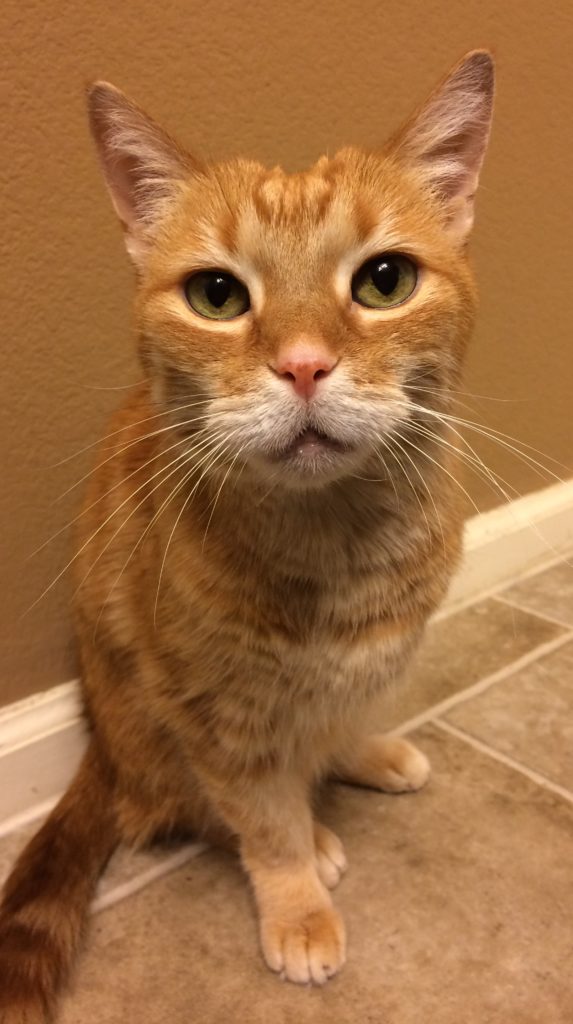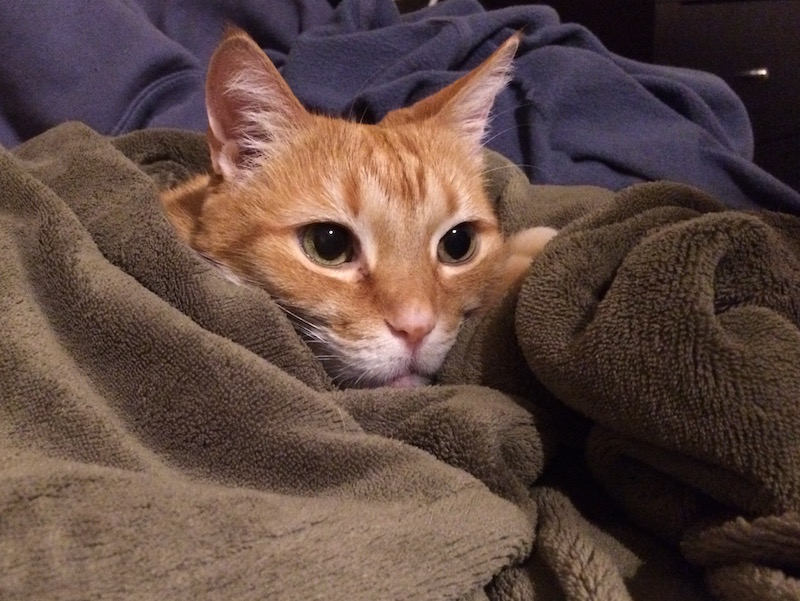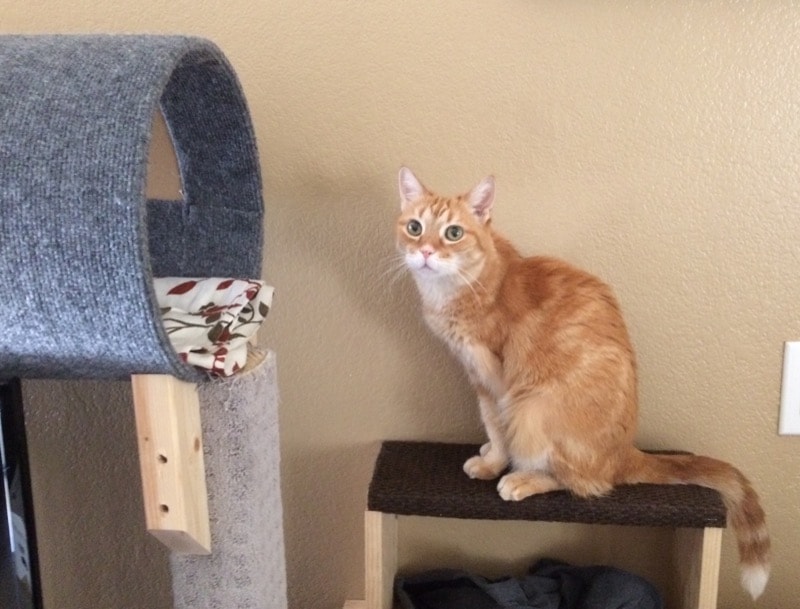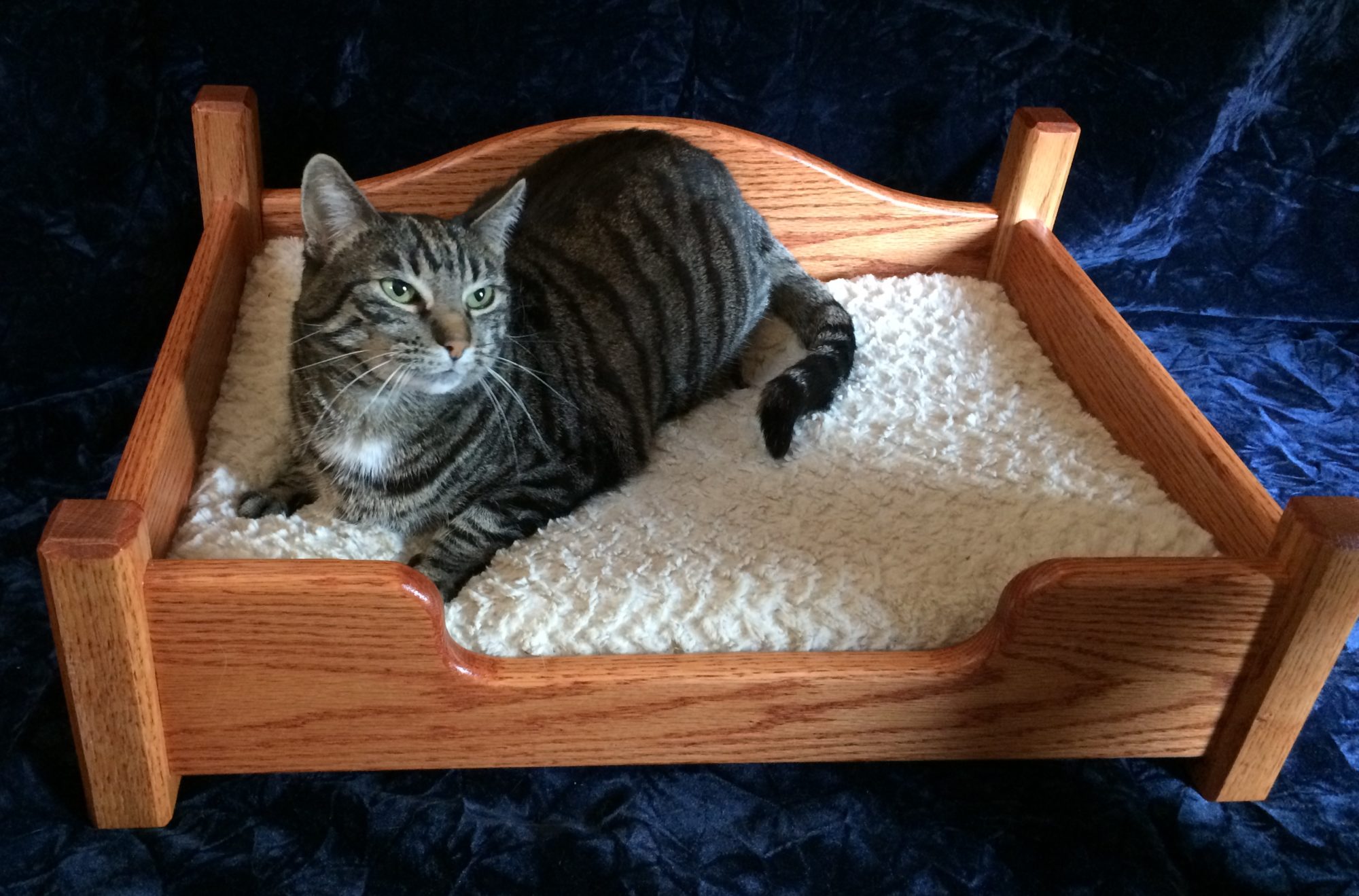According to Cornell University College of Veterinary Medicine, cats become senior citizens between the ages of 7 and 12; it’s different for every cat, and some cats age more quickly or differently than others. As our beloved Ginger aged, we learned a great deal about caring for senior cats, and some of her experiences may help you with your senior kitties.

The Whisker Shop is a participant in the Amazon Services LLC Associates Program, and some links in this post are affiliate links. This means that there will be no additional cost to you if you shop at Amazon.com using these links, but we will receive a small percentage of those purchases as a commission. The opinions in this post belong to The Whisker Shop, and we only recommend products we would use or have used ourselves.
Getting older for all of us usually means it’s harder to stoop down like we did when we were younger. This is especially true for cats at meal time. A raised food bowl like this one will make meals more comfortable and encourage seniors to maintain their weight.
When the temperature starts to drop outside, these Sunbeam electric throw blankets become the most popular spots in the house. We have several, mostly because we can’t bear to move a cat when we want to use one for ourselves! Keep it on the lowest setting, and always check in on your cats while the blanket is on, to keep them safe from overheating or any problems with the blanket. It doesn’t take much warmth to attract a cat! These will shut off after 3 hours, too, adding another layer of safety. We don’t recommend using electric heating pads (like those used for injuries and arthritic humans) because we find they’re much warmer than the lowest blanket setting, and we have always worried about overheating our cats (or worse).

Try to shorten the distances between their favorite napping spots and their litter box and food dish. Pain from arthritis might slow them down, so they don’t reach the litter box in time, or they can’t make the trek across the house. This might mean accidents outside the box, or they may seek out less desirable places to relieve themselves, such as behind a couch. Cats like to be neat and tidy– if your older kitty starts doing this, they’re probably just as unhappy about it as you are! If there isn’t a convenient place for a litterbox, consider purchasing a litter box enclosure that will blend in with your decor and replace an end table or shelf. Or, if you’re in Arizona, you could have The Whisker Shop design something unique (drop us an email)!
A litter box with a short entry (like this one) is also very helpful. You could also modify their existing litter box by cutting the litter box down on one side (taking care not to leave sharp edges). Since seniors can get a little messy, you might also want to surround the box with puppy training pads (or “chux” if you ever worked in healthcare) can be a real time saver. (And a carpet saver!)
Consider adding shelves and steps to help them get to their favorite spots. We would love to design custom cat shelves for your feline family members!


